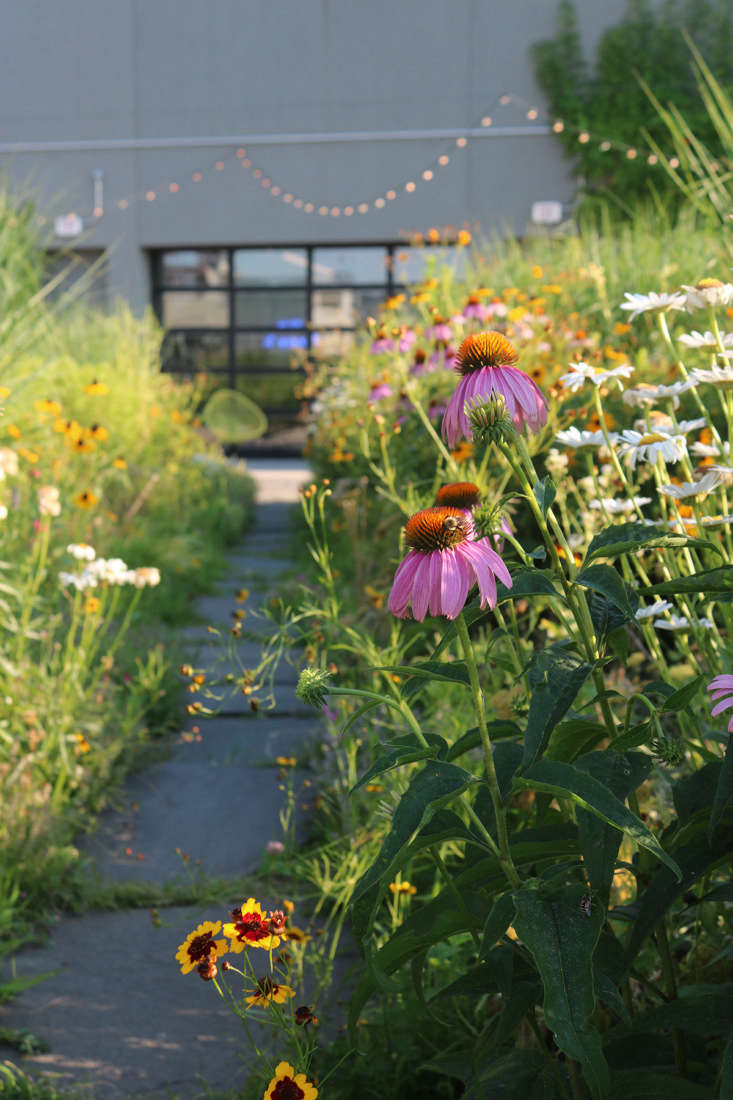We all know these terms separately, but what do nectar and corridor mean combined? (This was my own question recently.) You are probably guessing that it has to do with the iconic North American monarch butterfly, whose population is struggling and who has been recently added to the endangered species list. Well, you’re correct, but only partially.
Recently, I asked head of Garden for Wildlife™, Mary Phillips, from the National Wildlife Federation, to help us better understand the term as well as offer some top tips on how to create your own nectar corridor.
What is a nectar corridor?

Nectar corridors are basically a series of habitat patches containing plants that flower at critical times for pollinators: during spring and fall migrations. “These patches provide stopping-off points for the migrating butterflies to refuel and continue their journey,” says Mary. “Having these islands of nectar sources is particularly important within large areas of urban and agricultural development. The discontinuous patches of nectar sources are ‘corridors’ that monarchs will follow, like stepping-stones across a stream to complete their migration.” Other nectar-loving pollinators, of course, also appreciate and depend upon a flow of food, so this approach serves many.
But isn’t planting milkweed enough?

Mary delivers the bad news: “Planting native milkweed in a garden is not enough.” She says that nectar corridors need to include, besides native milkweed, an abundance of native nectar plants that will be a much-needed food source for monarchs and other important pollinators alike. Mary adds, “We need all these marvelous pollinator friends to survive and thrive to support both our economy and natural ecosystems.”
So how do you build a nectar corridor?

1. Delay fall cleanup. Wait until early spring if possible to give pollinators a supply of nectar, pollen and seeds.
2. Don’t use pesticides. Monarchs are insects, and spraying insecticides will obviously kill them. Make the commitment to avoid using harmful insecticides and herbicides in your yard. “By implementing sustainable garden practices you are safeguarding monarchs, pollinators and birds,” she says.
3. Create monarch habitats. Plant pollinator-friendly plants, but be sure they’re native to your region. Same goes for milkweed: it’s important to choose the types specific to your area, because some milkweeds can carry parasites and do more harm than good. Note: The growing popularity of non-native plants such as tropical milkweed (Asclepias curassavica), giant milkweed (Calotropis gigantea), and butterfly bush (buddleia) is problematic because these plants don’t support a healthy and full migratory life cycle of the monarch. There are also early warning signs that tropical milkweed is becoming an invasive species in our country. A great resource to turn to if you’re looking to plant a nectar corridor is the National Wildlife Federation’s Garden For Wildlife website. It will tell you which plants are native to your region that offer wildlife nectar/food, cover, and places to raise young. The site also offers collections of pollinator-friendly native plants to purchase based on the state in which you live. Once you’ve incorporated all the elements of a wildlife-friendly habitat, get recognized by certifying your space through Garden for Wildlife’s signature Certified Wildlife Habitat program. You can register here: Certified Wildlife Habitat.
What are top nectar-rich plants?

Mary’s favorite perennial varieties that provide great fall nectar are: aster, goldenrod, ironweed, liatris, Joe Pye weed, salvias, and native sunflowers (their seeds are a bonus for birds). “Strive for 80 percent of your garden area to be native perennials,” she says. “For the remaining 20 percent, feel free to supplement with annual nectar plants—as long as they’re not invasive in your area.” Some ideas are: zinnias, lantana, pentas, sedum, marigolds, and cosmos. Pro tip: be diligent about deadheading flowers to ensure a continuous bloom lasting through fall.
For more on pollinator-friendly plants, see:
- Native Bee Balm: Pollinator-Friendly and Delicious, Too
- Pollinator Gardens: 8 Easy Steps to Design a Landscape with Native Plants
- Monarch Butterflies Are Nearing Extinction: 5 Ways to Help








Have a Question or Comment About This Post?
Join the conversation